#Butterfly Weed
Text
Milkweed Lovers Everywhere, Heed My Warning
By all means let me know if I'm wrong here, but if I'm not wrong then we're looking at a serious (at least to me) problem.
I've been trying to stray away from Tropical Milkweed (Asclepias curassavica) and towards more native species in my area--things like swamp, sandhill, etc--and Butterflyweed (Asclepias tuberosa) fits in that category for me. It's hard to find native milkweed plants in stores--even places I've gone to in the past that had a handful of native species are currently only selling Tropical Milkweed. Even still, I know that there's been a good bit of buzz around growing native species, and some stores I've visited have said they're trying to find vendors with native species--they're not only selling Tropical for lack of trying.
So imagine my surprise--and delight--when I go to Lowe's and see Asclepias tubersoa blazoned on a plant label!
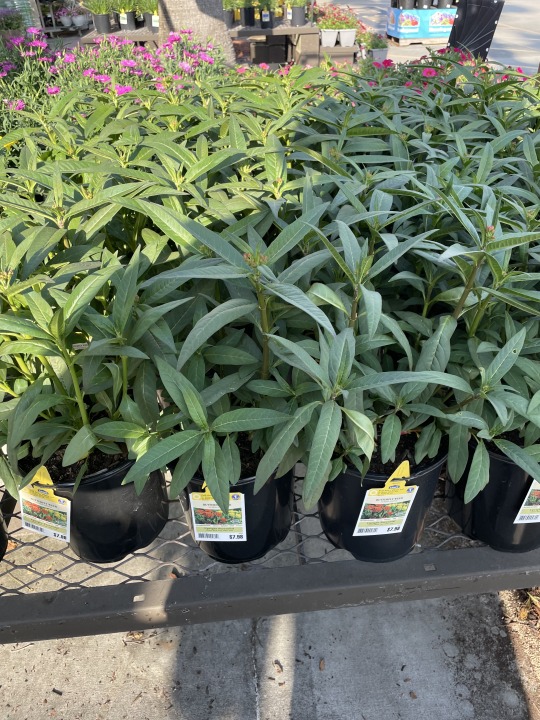
And imagine my surprise when it's being sold right next to Tropical Milkweed and looks almost identical to it.
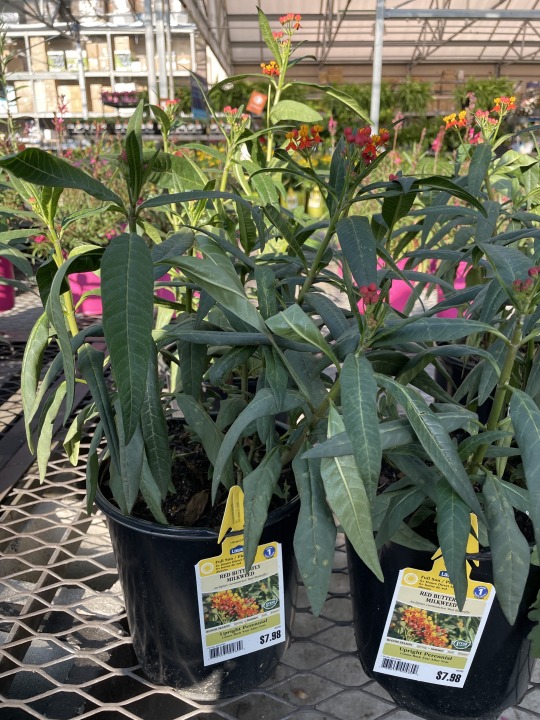
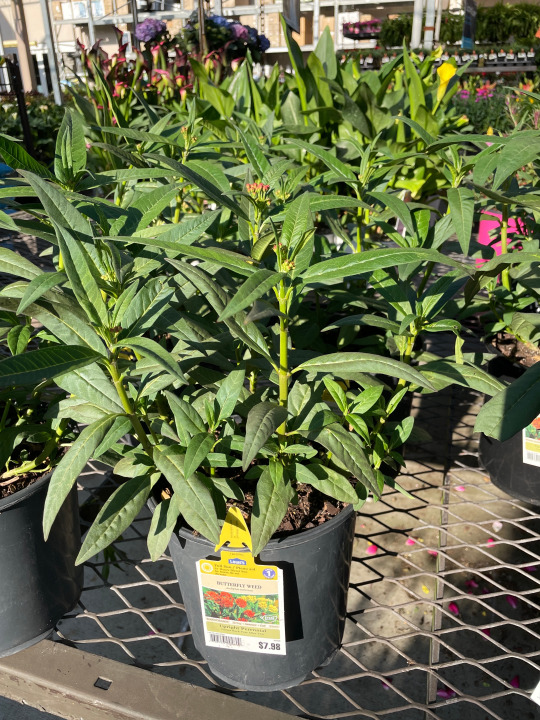
I was immediately suspicious--especially considering the red flower buds on the 'Butterfly weed'. I've grown Tropical Milkweed for several years, and while it's been awhile since I've seen a Butterfly Weed plant outside of a photograph, these definitely didn't look like what I'd seen. Not to mention, I'd only heard of Asclepias tuberosa flowering in orange or yellow--not red. Of course, at the same time, I'm not a professional botanist, and a quick google search did declare that butterfly weed can grow in red (though the images all look like asclepias curassavica to me...).

(Image from the Native Plant Database. Looking at this picture, I should've realized where this was going sooner...)
So I did the reasonable thing and bought two of them. I figured if the red buds somehow turned orange and were actually Butterfly Weed, then I'd be perfectly satisfied. If they turned out to be Tropical Milkweed, well, I simply would give them to my neighbor who's fond of them, or find something else to do with them.
(I feel the need to emphasize; there are a lot of people online who are in the 'if you plant tropical milkweed you're a horrible person and intentionally killing monarch butterflies' camp. I am not one of them; it's not invasive in my area of Florida, it just takes a little bit of extra managing in terms of cutting it back in October/November.)
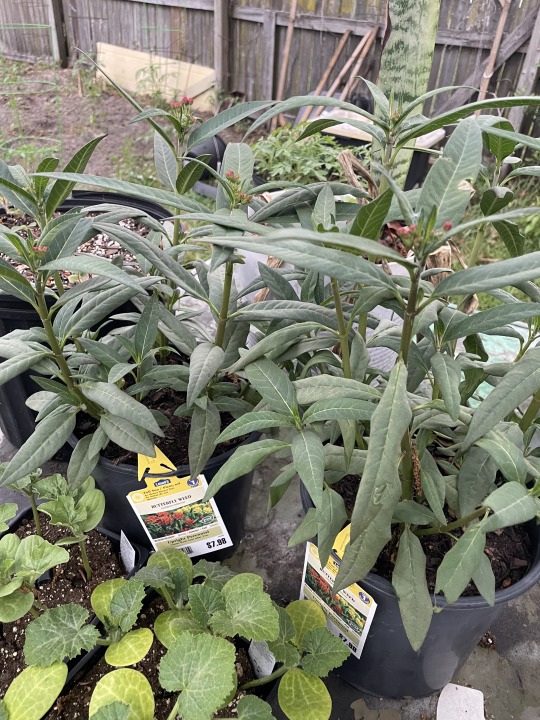
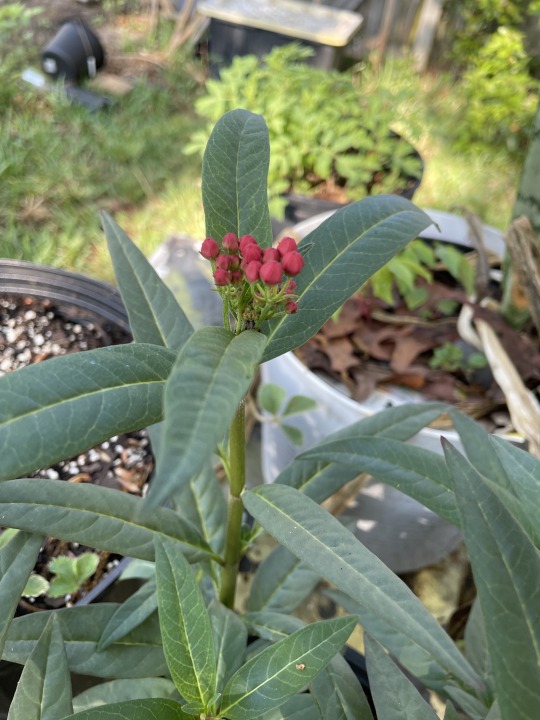
I ended up in the same Lowe's again today, shopping for my mom, and took a peek at their plant selection. Lo and behold, I found the Butterfly Weed, and...

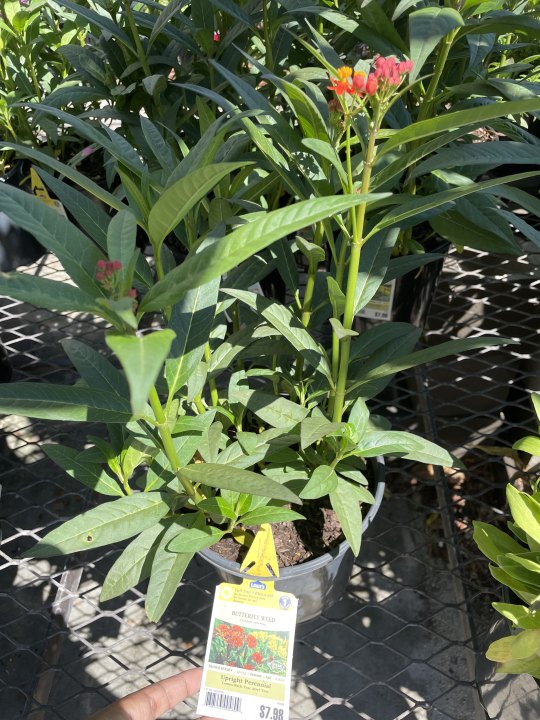
This sure does look like Tropical Milkweed to me, and to others in my gardening server, yet it's still labeled as 'Butterfly Weed.' Also, I didn't see any Tropical Milkweed on any of the shelves--at least, nothing labeled as Tropical Milkweed. Instead, all I saw was Tropical Milkweed disguised as Butterfly Weed.
This is, in my humble pollinator garden enthusiast opinion, a problem. At best, Lowe's--or the company they source their plants from--is mislabeling their plants on accident. Which could cause problems if people are buying the plants and putting them in a place that's not quite the right condition for them, or create severe disappointment if someone's excited to grow the native Asclepias tuberosa only to end up with something else entirely. At worst? Lowe's--or the company they source their plants from--are aware that people want to grow native milkweed and are either unable to or too lazy to grow them, and would rather try to get away with selling Tropical Milkweed--which has been growing increasingly controversial in some gardening circles--and still reap the benefits and profits of selling native milkweed species.
However, I'll be real? I'm not sure what exactly to do about it. So I guess I'm just letting everyone know; if you see 'Butterfly Weed (Asclepias tuberosa)' in your local Lowe's, at least double check. Otherwise, you may plant Tropical Milkweed/Scarlet Milkweed (Asclepias curassavica) instead.
#milkweed#gardening#flowers#pollinator gardening#pollinator garden#Lowe's#tropical milkweed#butterfly weed#asclepias curassavica#asclepias tuberosa#outdoor gardening#flower gardening#ani rambles#out of queue#idk how legible this post is but I hope its at least SOMEWHAT legible yknow?
928 notes
·
View notes
Text

day 30: nasturtium and butterfly weed
This one is for the amazing @Tief_In_Plaid, thank you so much again! I loved working on this!
229 notes
·
View notes
Text

Asclepias Promise - Asclepias is Milkweed, and this one has gone to seed. The pods pop open to reveal fluffy seeds, which are the promise of next year’s flowers. Monarch Butterflies rely on Milkweed for survival!
Find it at: https://www.fromthepurplehouse.art/purple-house-photographs?pgid=lmgnygmw-0f1fa32e-39a0-4f23-80b1-530174a16823
87 notes
·
View notes
Photo


Anime-eyed bees on Butterfly Milkweed (Asclepias tuberosa)
Carpenter-mimic Leafcutter Bee (Megachile xylocopoides), July 30, 2022, Kernersville, North Carolina,
and
Bellflower Resin Bee (Megachile campanulae), July 19, 2022, Southeastern Pennsylvania
#bee#bees#photographers on tumblr#megachile#beeblr#bugblr#insect#insects#bug#bugs#entomology#hymenoptera#nature#animals#milkweed#butterfly weed
849 notes
·
View notes
Text



Rudbeckia in my humble pollinator garden, now in its third year
#gardening#flowers#perennials#milkweed#coneflowers#sage#sedum#butterfly weed#astilbe#ornamental oregano#goldenrod#marigolds#monardia#wolfsbane
54 notes
·
View notes
Photo
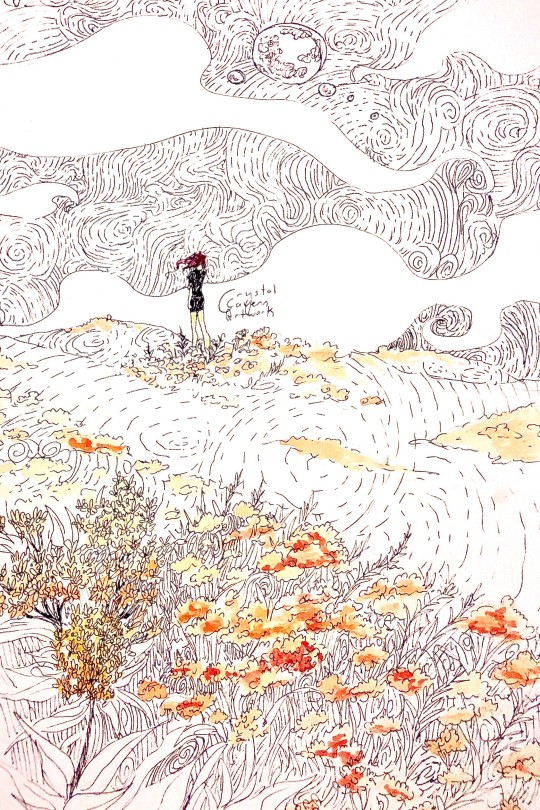
Inktober Day Twenty-Five: Butterfly Weed
Houseki no Hanatober
#houseki no hanatober#houseki no kuni#hnk#lotl#land of the lustrous#cinnabar#shinsha#butterfly weed#watercolor#inktober2022#my art#fanart#manga#anime
283 notes
·
View notes
Text
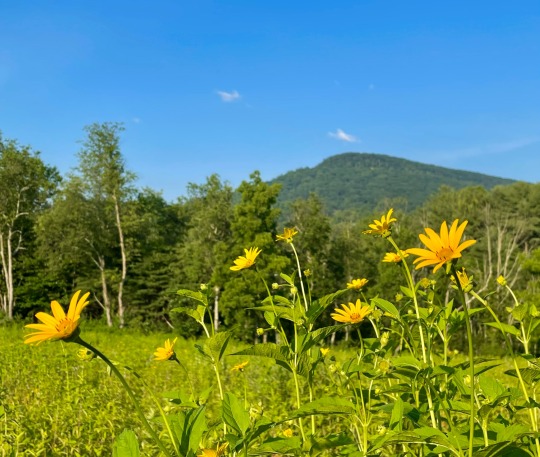
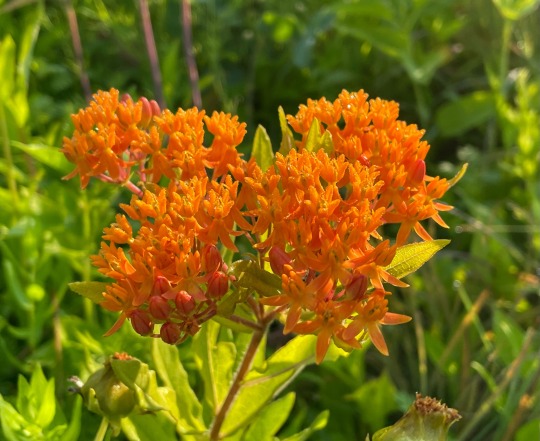

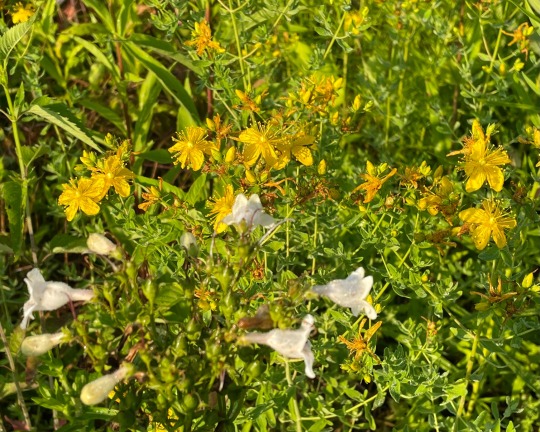

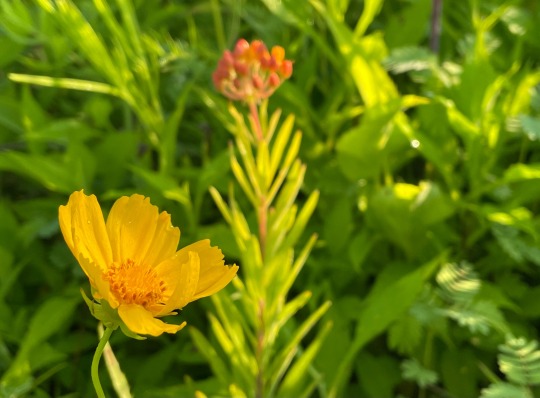

The flower fields at Eckville are nowhere near their peak yet but good things are happening.
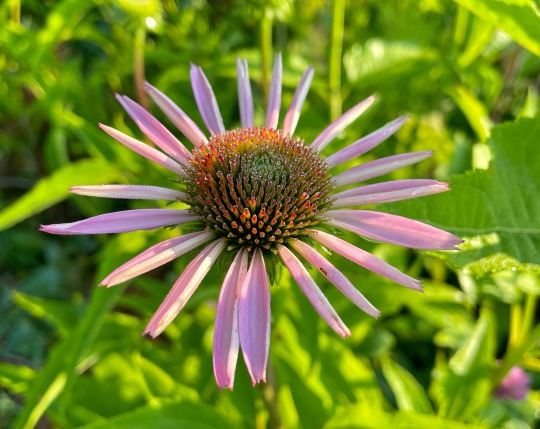
Forgot one.
#pennsylvania#landscape#wildflowers#flowers#coreopsis#st johns wort#butterfly weed#beardtongue#queen anne's lace#june#heliopsis#echinacea
450 notes
·
View notes
Text

#sons of the forest#sotf#art#digital art#oc#illustration#sotf oc#artists on tumblr#flowers#butterfly weed#purple hyacinth#most divorced man ever strikes again#original character#aesthetic#deftones
34 notes
·
View notes
Text

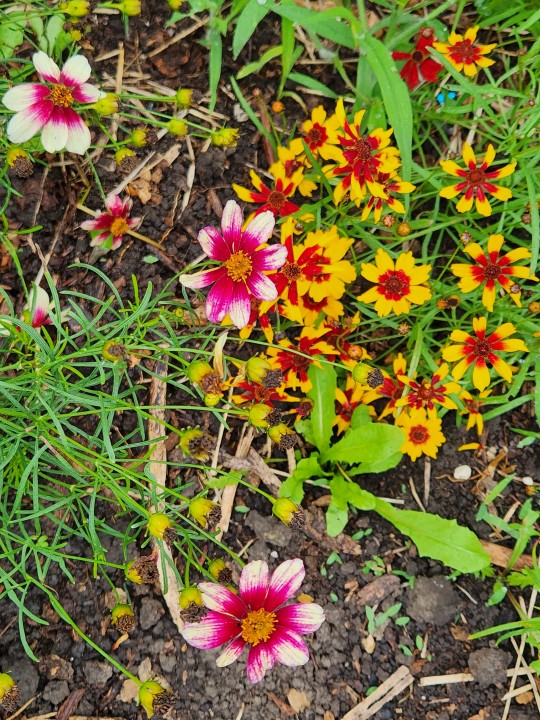
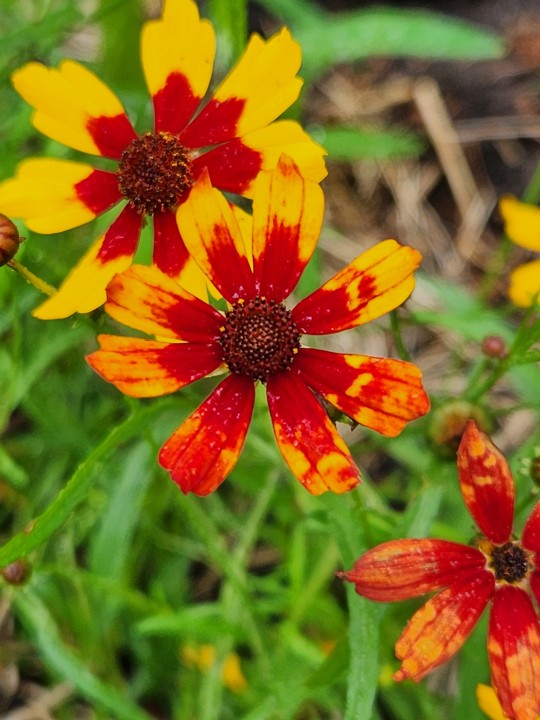
Good morning from the coreopsis (and chicory and butterfly weed)
39 notes
·
View notes
Text

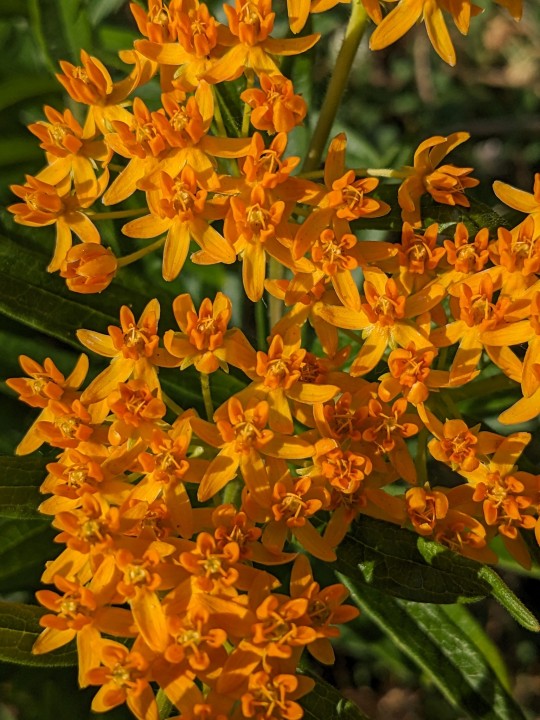
Treehouse Gardens
#butterfly weed#butterfly bush#orange flowers#bee#plant blog#plant photography#plants#neighborhoodsightseeing#flowers#garden#plant
41 notes
·
View notes
Text

#gardening#gardeners on tumblr#gardencore#cottagecore#orange flowers#wildflowers#milkweed#butterfly weed#autumn#fall
24 notes
·
View notes
Text










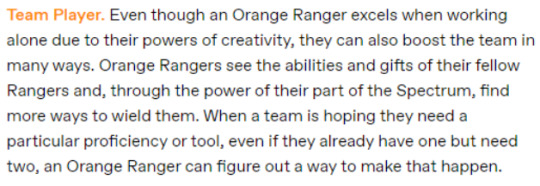
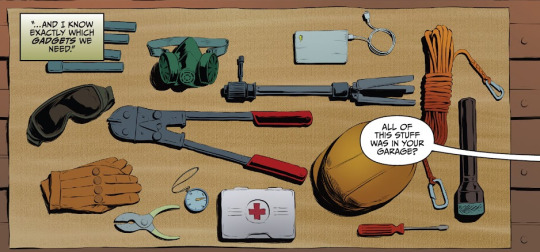

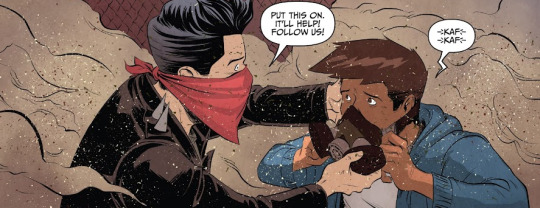








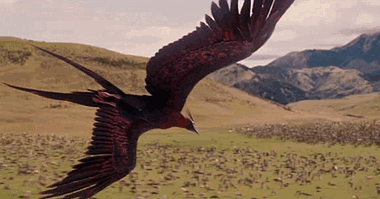





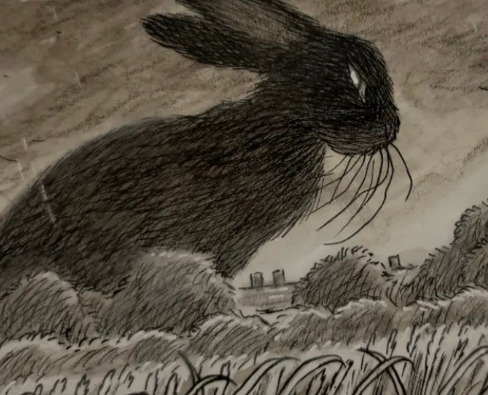

#web weaving#Eugene Skull Skullovitch#boom! comics power rangers#helluva boss#shattered grid#Ranger Slayer one-shot#go go power rangers#japanese philosophy#spongebob time cards#woyote#watership down graphic novel#the last unicorn graphic novel#crow time webtoons#fantasia 200#the chronicles of narnia#latin phrases#butterfly weed#carnelian gem#theme: one realm or the other; mighty morphin orange is Skull
9 notes
·
View notes
Photo
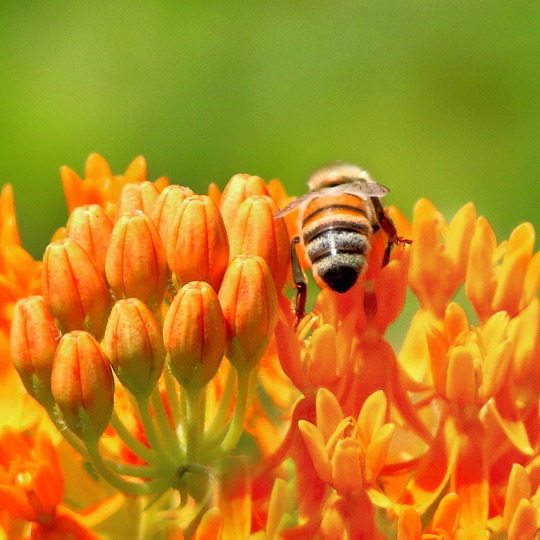
Budding butterfly weed and a bee's bottom show me that some small parts of this world are still beautiful.
#midwest#Summertime#bee#bees#beepic#bee photography#butterfly weed#insects#insect#insectphotography#insectpic#flying insects#wildlife#wildlife photography#wildlife photos#wildlifephotography#pszczoła#biene#abeille#nature photography#abeja#abelha#nature photos#original photography
200 notes
·
View notes
Text
Butterfly Weed
Butterfly Weed, two things that are appreciable on their own as well as together. This is the common name of Asclepias tuberosa, a perennial native to New Jersey and a beautiful addition to a garden. Keep reading to learn some specifics about this beauty.
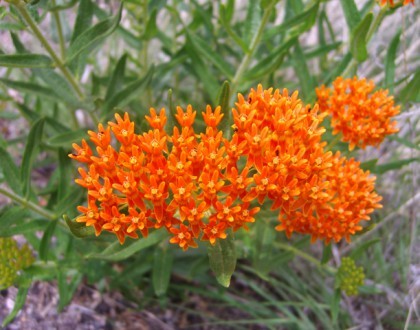
[Image I.D. A close-up photo of a Butterfly Milkweed in bloom. The flowers have five close-together orange petals and the plant’s green stems and flowers can be seen behind them. End I.D.]
As a perennial, Butterfly Weed, also called Butterfly Milkweed, needs only to be planted once, and will then be able to re-flower every year. It blooms in late spring to early summer, around June to August.
Along with being a native species to the east and southwest of North America, this flower has many environmental benefits.
Butterfly Weed flowers are a useful source of nectar for many pollinators, including butterflies, hummingbirds, and bees. Monarch butterflies can also use the leaves as a place to lay eggs.
This plant is tolerant to drought, and it grows deep roots that are very beneficial to strengthening soil against erosion.
The best way to include these in a garden is to start from seeds. They need about three months of cold temperatures without moisture, so planting in the fall is ideal. They might take more than a year or two to bloom, but once established, they can be left alone. Additionally, they are not the favoured nourishment for deer or rabbits, so they are likely to be left untouched. They might occasionally require watering to remove aphids, though.
History Bit
Another interesting fact about this plant is its historical use as herbal medicine.
Reportedly, several Native American communities would use the roots of Butterfly Weed to treat respiratory illnesses like pleurisy and bronchitis. This is why this plant is also sometimes called pleurisy root. During the 1918 influenza pandemic, pleurisy root was one of a few medicinal plants used to help patients. Physicians at the time reported that it was very useful for chest pains and serious coughs.
Additionally, in some Native American communities, seed pods were sometimes boiled to be eaten, and the soft parts spun to make candlewicks.
Ultimately, Butterfly Weed is not only a gorgeous flower to have in a garden, it also comes with many benefits to soil and wildlife. If you’re looking to diversify your yard in the east or southwest of North America, this plant is a very good choice.
Additional Resources
1. https://www.jerseyyards.org/plant/asclepias-tuberosa/
2. https://www.fs.usda.gov/wildflowers/plant-of-the-week/asclepias_tuberosa.shtml#
3.https://www.tnnursery.net/blogs/tn-nursery-blog/the-history-and-benefits-of-butterfly-weed#
4. https://tpwd.texas.gov/huntwild/wild/species/butterflyweed/
5. https://www.jstage.jst.go.jp/article/cpb1958/48/7/48_7_1017/_pdf
#shorter one for today#work has been do busy#butterfly weed#butterfly milkweed#environment#research#article#resources#yard#native plants#flowers#gardening#new jersey#planting#plants#Please tell me if I did the image id wrong
3 notes
·
View notes
Text

I think there is a small, quiet part of you that enjoys the misery I carefully feed you each day— as if it were the very thing keeping you alive.
#if you can handle me at my THGW posting you don’t deserve me at my abstract painting#sorry#autoart#art#art of the day#collage#painting#fan art#camellia#butterfly weed#agnes petrella#zoe cross#things have gotten worse since we last spoke#thgwswls#thgw#eric larocca#art on tumblr#2022#meat#anyone who reads tags: Camellia means Longing For You#and the yellow flower is butterfly weed which means Let Me Go#white camellias (which i made blue so they look like something) can mean death
98 notes
·
View notes
Text
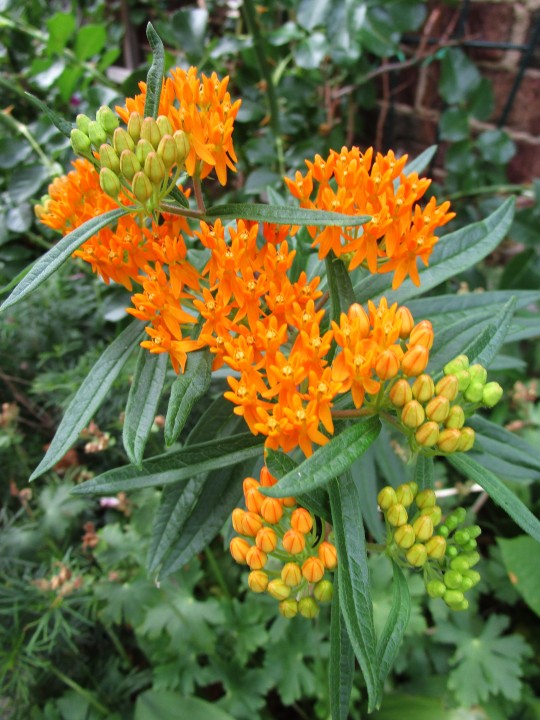

Two varieties of Milkweed - July 2, 2023
photos by Charles Reeza
42 notes
·
View notes